
It’s that wonderful time of year again when the Harvest Moon teeters on the horizon at sunset. You can watch the big orange globe rise on Friday (Sept. 16) from your home or favorite open vista just as soon as the Sun goes down. Despite being one of the most common sky events, a Full Moon rise still touches our hearts and minds every time. No matter how long I live, there will never be enough of them.
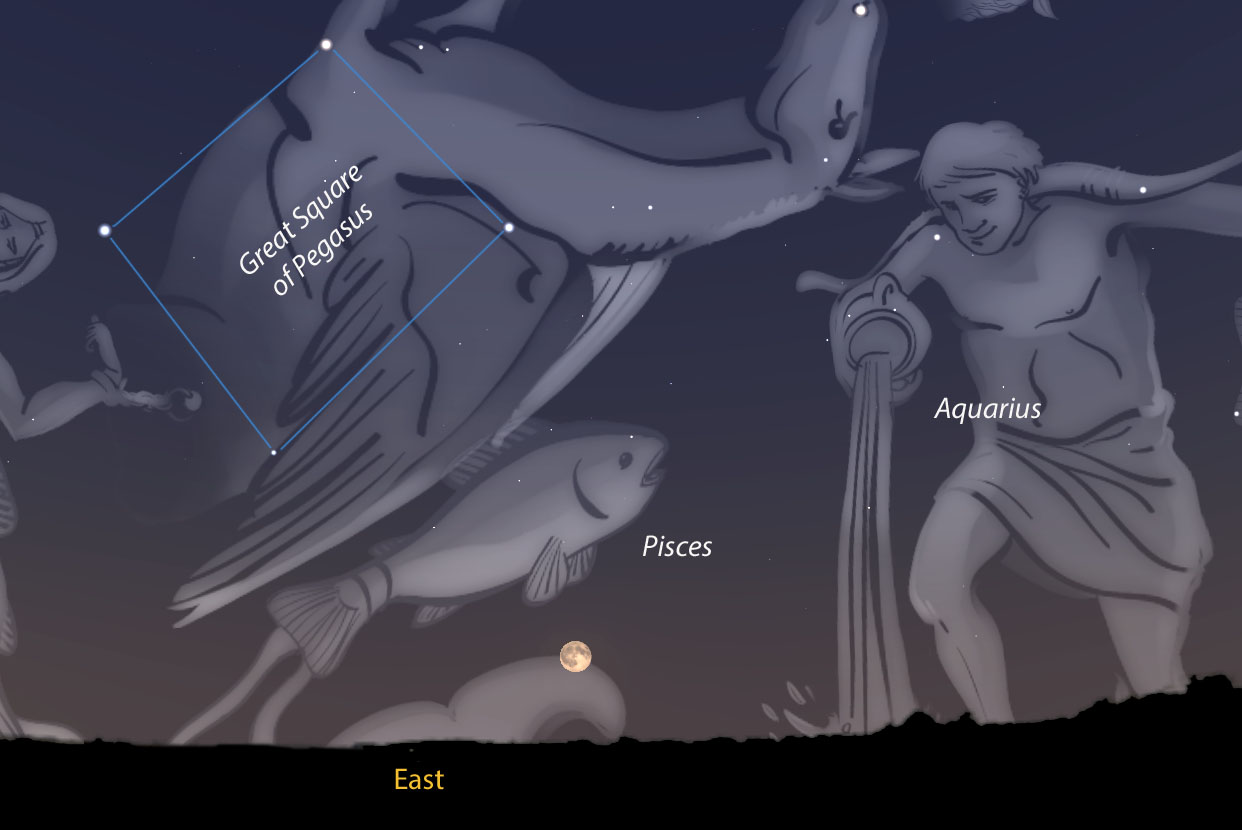
To see a moonrise, the most important information you need is the time the moon pops up for your city, which you’ll find by using this Moonrise and Moonset calculator. Once you know when our neighborly night light rises, pre-arrange a spot you can walk or drive to 10-15 minutes beforehand. The waiting is fun. Who will see it first? I’ll often expect to see the Moon at a certain point along the horizon then be surprised it’s over there.
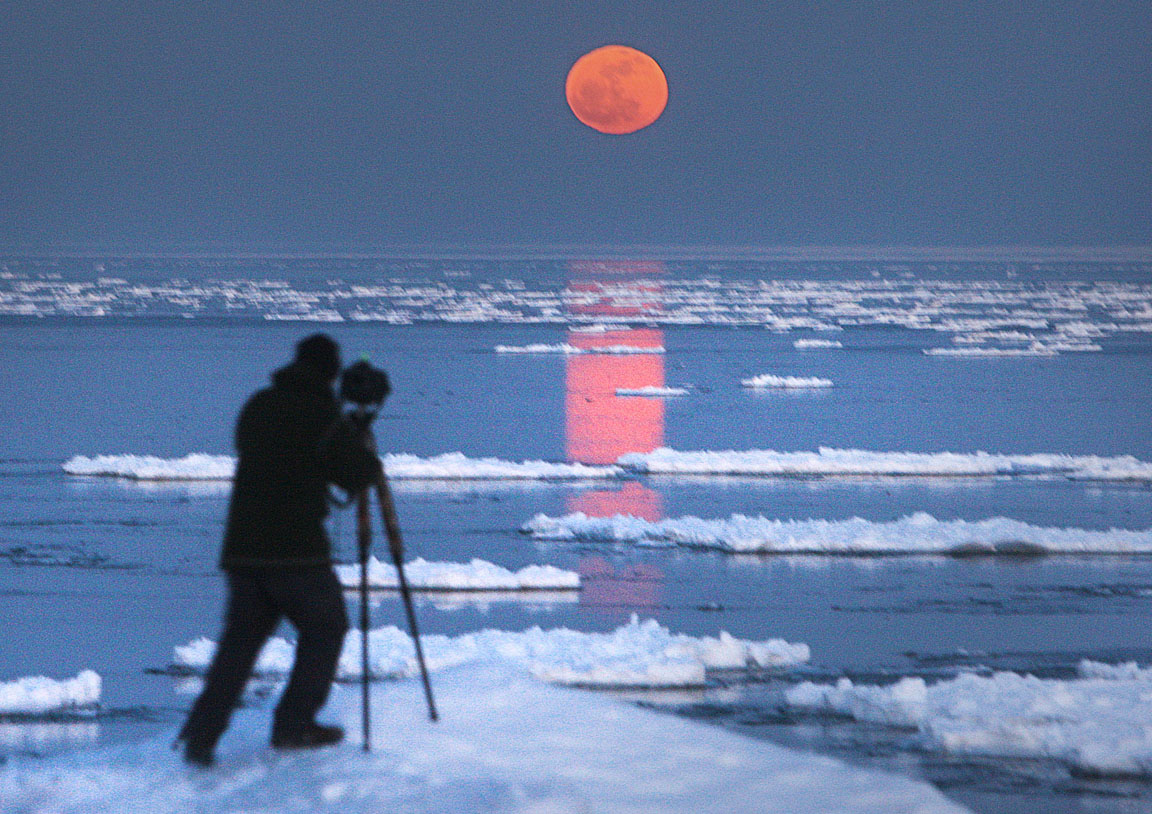
Depending on how low to the horizon you can see, it’s possible, especially over water, to catch the first glimpse of lunar limb breaching the horizon. This still can be a tricky feat because the Moon is pale, and when it rises, shows little contrast against the still-bright sky. Since the Moon moves about one outstretched fist to the east (left in the northern hemisphere) each night, if you wait until one night after full phase, the Moon will rise in a much darker sky and appear in more dramatic contrast against the sky background.
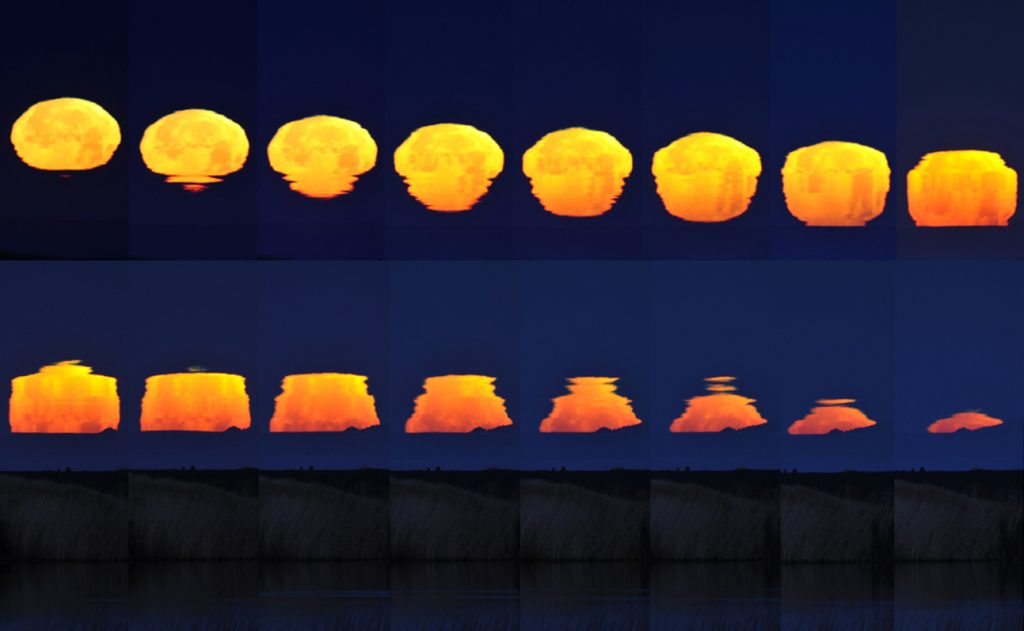
Look closely at the rising Moon with both naked eye and binoculars and you might just see a bit of atmospheric sorcery at work. Refraction, illustrated the icy moonrise image above, is the big one. It creates the squashed Moon shape. But more subtle things are happening that depend on how turbulent or calm the air is along your line of sight to our satellite.
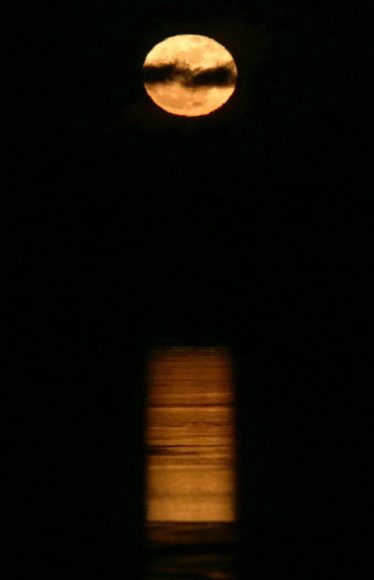
Rippling waves “sizzling” around the lunar circumference can be striking in binoculars though the effect is quite subtle with the naked eye. Much easier to see without any optical aid are the weird shapes the Moon can assume depending upon the state of the atmosphere. It can looked stretched out like a hot air balloon, choppy with a step-like outline around its bottom or top, square, split into two moons or even resemble a “mushroom cloud”.
If you make a point to watch moonrises regularly, you’ll become acquainted as much with Earth’s atmosphere as with the alien beauty of our sole satellite.
This Full Moon is special in at least two ways. First, it will undergo a penumbral eclipse for skywatchers across eastern Europe, Africa, Asia and Australia. Observers there should watch a dusky gray shading over the upper or northern half of the Moon around the time of maximum eclipse. The link will take you to Dave Dickinson’s excellent article that appeared earlier here at Universe Today.
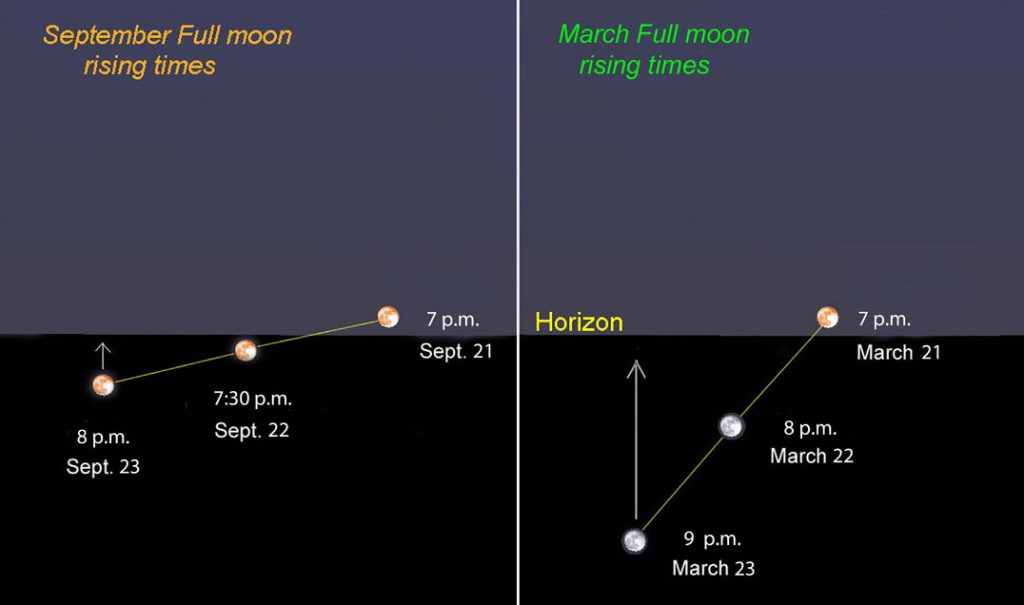
In the northern hemisphere, September’s Full Moon is named the Harvest Moon, defined as the Full Moon closest to the autumnal equinox, which occurs at 9:21 a.m. CDT (14:21 UT) on the 22nd. Normally, the Moon rises on average about 50 minutes later each night as it moves eastward along its orbit. But at Harvest Moon, successive moonrises are separated by a half-hour or less as viewed from mid-northern latitudes. The short gap of time between between bright risings gave farmers in the days before electricity extra light to harvest their crops, hence the name.
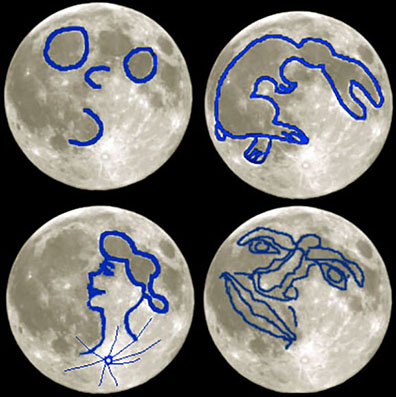
Why the faster-than-usual moonrises? Every September, the Full Moon’s nightly travels occur at a shallow angle to the horizon; as the moon scoots eastward, it’s also moving northward this time of year as shown in the illustration above. The northern and eastward motions combine to make the Moon’s path nearly level to the horizon. For several nights in a row, it only takes a half-hour for the Earth’s rotation to carry the Moon up from below the horizon. In spring, the angle is steep because the Moon is then moving quickly southward along or near the ecliptic, the path it takes around the sky. Rising times can exceed an hour.
As you gaze at the Moon over the next several nights, take in the contrast between its ancient crust, called the lunar highlands, and the darker seas (also known as maria, pronounced MAH-ree-uh). The crust appears white because it’s rich in calcium and aluminum, while the maria are slightly more recent basaltic lava flows rich in iron, which lends them a darker tone. Thanks to these two different types of terrain it’s easy to picture a male or female face or rabbit or anything your imagination desires.
Happy moongazing!
